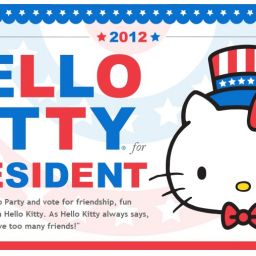
Interestingly, both books are written by Western female journalists that are not of Asian descent. Also, both are written primarily around interviews with individual women, using their experiences to explore larger social phenomena. Both books touch upon fandom issues, but this is not their primary focus.
The most valuable aspect of The Asian Mystique from a pop culture studies perspective is a multiple chapter analysis of stereotypes used in Western media of Asians and Asian-Americans. Prasso discusses how media stereotypes are based in a binary dichotomy in two ways — first, the stereotypes vary based on gender, and second, Asian women are seen as either submissive and desirable (“China Doll”/Vixen) or as dominant and therefore to be feared (“Dragon Lady”). This section would be perfect for a film/television or ethnic studies class.

Kickboxing Geishas also discusses the economic and social impact of teenage girls and their style:
‘Joshi kosei [teenage girls] are voracious shoppers with a quirky eye for fashion and an uncanny ability to start trends.’
Although there are broad groupings among …Japan’s contemporary costume culture …– kawaii, or the culture of cuteness; gothic; Lolita, etc. — the young women (and some men) who embody these street styles thrive on their individuality. …I believe the costuming of today’s Japanese young women reveals, in a powerful way, how for many young Japanese females, Japan is a hard place to become a grown woman.
[Yasuko Nakamura] recently published a book, The Uchira and Osoro Generation: Unadorned High School Girls of Tokyo. The Uchira in the title refers to the way Shibuya’s masses of teenage girls like to refer to themselves–a posse called “us.” Osoro is short for osoroi meaning that the girls like to dress the same. Currently eight thousand of these girls are on [her company’s] payroll [;] companies rely on her and her teen experts to help develop products such as soft drinks and cosmetics.
The Asian Mystique mentions “ladies comics”/manga and their role as peer sex education:
Unlike in the West where [teen] girls pass around steamy romance novels between friends [Peyton Place to V.C. Andrews to Twilight] or watch teen dating shows [90201 of yore and now], Japanese girls read [explicit] manga.
One of the most interesting side notes in Kickboxing Geishas involves Bizet’s Carmen, which has been reinterpreted once again, this time in a Japanese ballet where the action takes place within a Japanese business where Carmen is an “office lady” (secretary/tea server) and Jose is the corporation’s security guard. (Someone should write a book on the incredible resonance of Carmen cross-culturally!)
Both books have so much more than is truly in the scope of this blog, with analysis of the real world day-to-day sexism that women face. The Asian Mystique is especially recommended for its in-depth analysis of many issues, including the sex industry throughout Asia.



